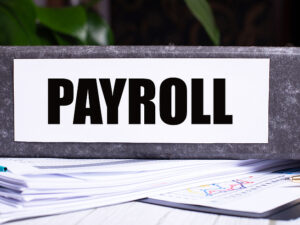How a Budget Can Contribute to Your Success
Sep 30, 2024

One reason many people disdain the budgeting process is that they associate budgets with restraint — that is, not spending money for something because it’s not in the budget. However, if you’re calling the shots, you can blow your budget as much as you want on the spending side. And there are times when it’s essential to do just that.
For example, you might get hit with an unexpected spike in production costs. This would hardly be a surprising occurrence in today’s inflationary economy. Or, on a more positive note, you could see a big jump in demand for your products and need to buy additional supplies to increase production. Whatever the reason for the higher costs, planning is a good way to deal with them.
Using a Budget as a Finance Tool
One of the best ways to avoid putting yourself in a financial corner is to plan for the unexpected. Not only that, but the process of creating a budget can provide a better understanding of your overall business. In the early stages of creating a budget you might hear yourself saying something like, “What? I had no idea we’re paying that much for electricity!”
When you put serious effort into a budget, over time, you’ll become much better at it, and your budgets will become increasingly helpful in your efforts to meet financial goals. As your budget becomes fine-tuned, it can serve as a road map of where you’ve been and where you’re heading. It might even highlight fraud that’s occurring in your business. For example, if there’s an unexplained spike in a cost category, that could indicate someone within your ranks is cooking the books.
Forget Past Failures
If you’ve created a budget in the past and found it wasn’t useful, don’t give up on the idea. Instead, try starting from scratch, possibly using a trustworthy budget template available online. Adjust it to suit the expense categories of your industry and company.
Don’t use the excuse that you’re too busy to budget. In the long run, your budget will provide guidance that could inform decisions and save time and frustration later. You might find that just the exercise of listing all the revenue and expense categories is eye-opening. For instance, you could discover that you’re paying for things you shouldn’t — such as insurance on an obsolete piece of equipment that can be sold or otherwise disposed of. Perhaps you’re renting storage space that sits empty.
Don’t get bogged down with complex spreadsheets if that’s not your thing. Simple formulas will do. Or you might even start with pen, paper and a calculator.
Forecasting Revenue
The hardest part of creating a budget is the revenue portion. Although segmenting your revenue categories is straightforward, knowing what numbers to plug into each one is more challenging. But if you try to create a budget in a vacuum, you’re losing out on a key part of the exercise. The budget should be the numerical expression of your business plan, a guide for where you want to head. It might be helpful to step aside for a moment to consider what you expect for the next year. (See “Cash Flow Projections” at right.)
An added benefit to making revenue projections is that you can take time to think about the steps you can take to generate sales. These steps might include introducing a new product or service, launching a new social media campaign or moving to a new location that will be more customer friendly. There are no “build-it-and-they-will-come” guarantees so, while you can be somewhat optimistic with your revenue projections, be realistic above all.
Recognizing Expenses
On the expense side, your bookkeeping system will be your guide to setting up budget categories. Use the historical data provided by the checks you’ve written as a starting point: utilities, insurance, rent and so on.
As you move through the year, you’ll add to your budget the monthly “actuals” to show how you’re doing relative to your original expectations. But you don’t change the budget itself. If you do, it’ll be harder to piece together how the year turned out compared to what you anticipated. Those budget variances will hold important lessons for the preparation of your budget the next time around.
As noted, however, leaving the budget as-is doesn’t mean you can never deviate from it. There are times when you’ll have to deviate to continue operating, such as when the local utility company raises rates. Don’t change the budget itself. Let’s say you budgeted $20,000 for the year’s electricity and, by the ninth month, you’re already over that amount. It might be tempting to increase the budgeted amount so your budget looks better, but resist that temptation. Instead, when you go to make the next year’s budget, you can use the necessary deviations to more accurately estimate what you must spend and what you should reasonably anticipate.
Arrange Low-Cost Financing
As you put your budget together, you might discover that you’re going to need some kind of financing to see you through the year. The interest and principal repayments are just two more expense categories you’ll need to build in. This discovery might save you from the nasty surprise of needing quick cash and help you avoid higher-cost financing to cover those cash shortfalls. Generally, the faster you need to get cash, the more you’ll pay for it.
Learn From Variances
You’ll probably need to begin work on the following year’s budget before your current budget year is over. Whatever the timing, remember that you aren’t just budgeting for the sake of budgeting. Review and consider the implications of budget variances — and there will be plenty — from the current year to prepare for an even better budget for the following year. Kirsch CPA Group can help you create your budget and analyze it near year-end to highlight how to improve the budgeting process going forward.
Cash Flow Projections
An important adjunct to your regular budget is a monthly cash flow forecast. Remember, cash might not come in the door when you make a sale. And you won’t likely pay all of your business bills in the month you receive them. To see where you stand, begin with:
- Determining how much cash you expect to have at the beginning of the year,
- Adding the amount of cash you hope to bring in for each month, and
- Calculating the amount of anticipated outflow.
Unlike a regular budget, you should update the cash flow projection monthly to ensure you won’t run into a cash drought and suddenly need to take out a loan.
Schedule an appointment to learn how we can support you
© Copyright 2024. All rights reserved.
Sign Up for Email Updates
Accounting & Financial News

Small Business Owners: Beware of Common Payroll Blunders
Managing payroll can be a major challenge for small business owners, especially as state and federal payroll…





